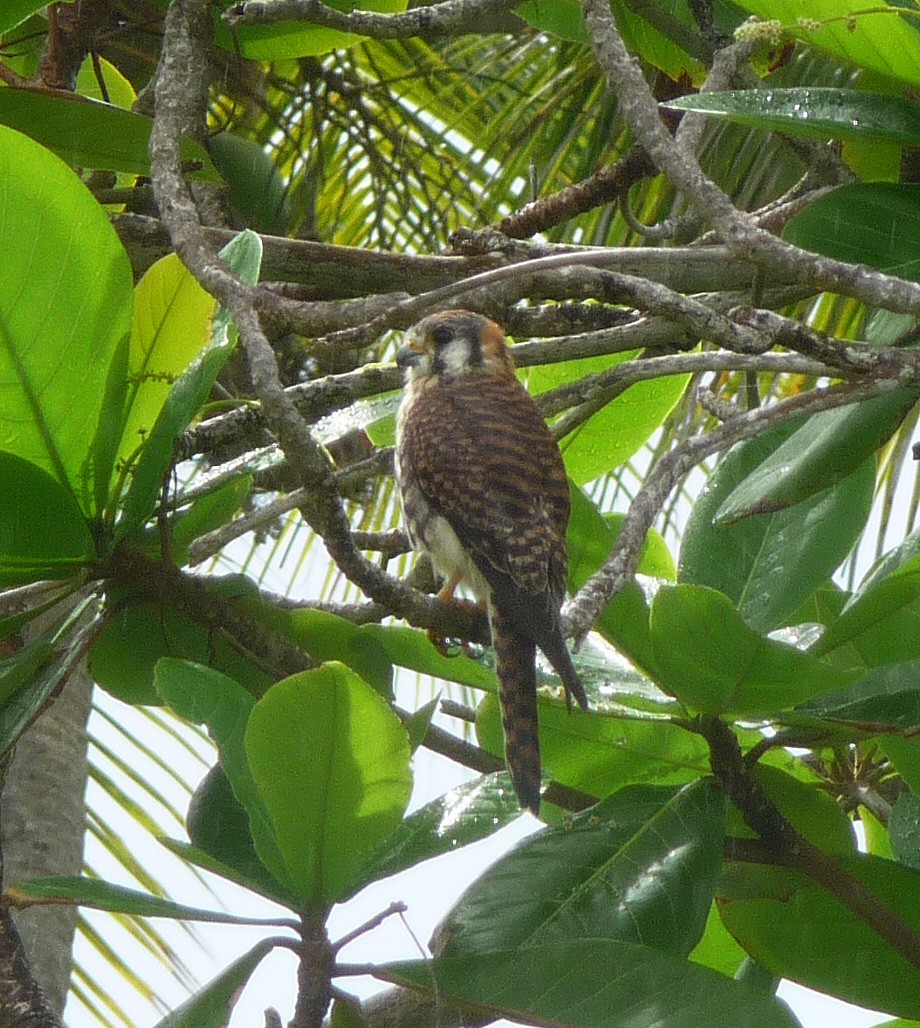American Kestrel
A species of True Falcons Scientific name : Falco sparverius Genus : True Falcons
American Kestrel, A species of True Falcons
Botanical name: Falco sparverius
Genus: True Falcons
Content
Description People often ask General Info
Description
The american Kestrel (Falco sparverius) is the smallest falcon in North America, but also the most common. It can also be found in South America and usually hunts from the ground rather than in the air. The female is allowed to choose their mates when on the breeding ground, so the males attract them with dances and displays.
Size
22 - 31 cm
Life Expectancy
11 years
Nest Placement
Cavity
Clutch Size
4 - 5 eggs
Incubation Period
1 - 2 broods
Number of Broods
26 - 32 days
Nestling Period
28 - 31 days
Feeding Habits
American Kestrel's diet mainly consists of insects like grasshoppers, beetles, and cicadas; arachnids; and small vertebrates including rodents, bats, birds, and occasionally snakes, lizards, and frogs. American Kestrel demonstrates adaptability in feeding habits, maintaining high population densities due to its varied diet.
Habitat
American Kestrel flourish across temperate to tropical areas, favoring open environments like grasslands, deserts, savannas, and agricultural fields. Adaptable to human presence, they inhabit urban to suburban spaces, utilizing both natural and artificial structures for perching and nesting. Sparse vegetation and hunting opportunities are essential to their choice of habitat, with nesting cavities being pivotal during breeding.
Nest Behavior
American Kestrels have the male search and suggest nest sites. The female selects, and they lay eggs in spring, with parental care shared amongst the pair.
Nest Characteristics
American Kestrel's nests are typically in cavities like old woodpecker holes, tree hollows, rock crevices, or building nooks. They don’t use nesting materials but may form a shallow depression.
Dite type
Carnivorous
People often ask
General Info
Feeding Habits
Bird food type
Bird Feeder Type

Platform
Sounds
Call
Recording location: United States
Behavior
American Kestrel engage in diurnal hunting, often perching in one location for an extended period to scan for prey or hopping between perches. They pounce to capture prey, consuming small victims on site or transporting larger ones to a perch. During the breeding season, american Kestrel exhibit specific mating behaviors, such as males performing climbing and diving displays with distinctive calls to assert territory and attract mates. Gift exchanges of food, typically from male to female, are also part of their courtship ritual. American Kestrel may congregate in small groups early in the breeding season. They are known to confront larger raptors in defense of their territory and compete aggressively with other cavity-nesting species for nesting sites.
Species Status
The American kestrel is likely the most abundant falcon in North America, although its total population is difficult to quantify, as local populations can change quickly due to resource availability. Count data from the USGS Breeding Bird Survey (BBS) indicate that the North American breeding population is experiencing long-term and gradual but sustained declines, with some regions, such as New England and coastal California, exhibiting more rapid declines. 
Scientific Classification
Phylum
Chordates Class
Birds Order
Diurnal Birds of Prey Family
Falcons and caracaras Genus
True Falcons Species
American Kestrel 